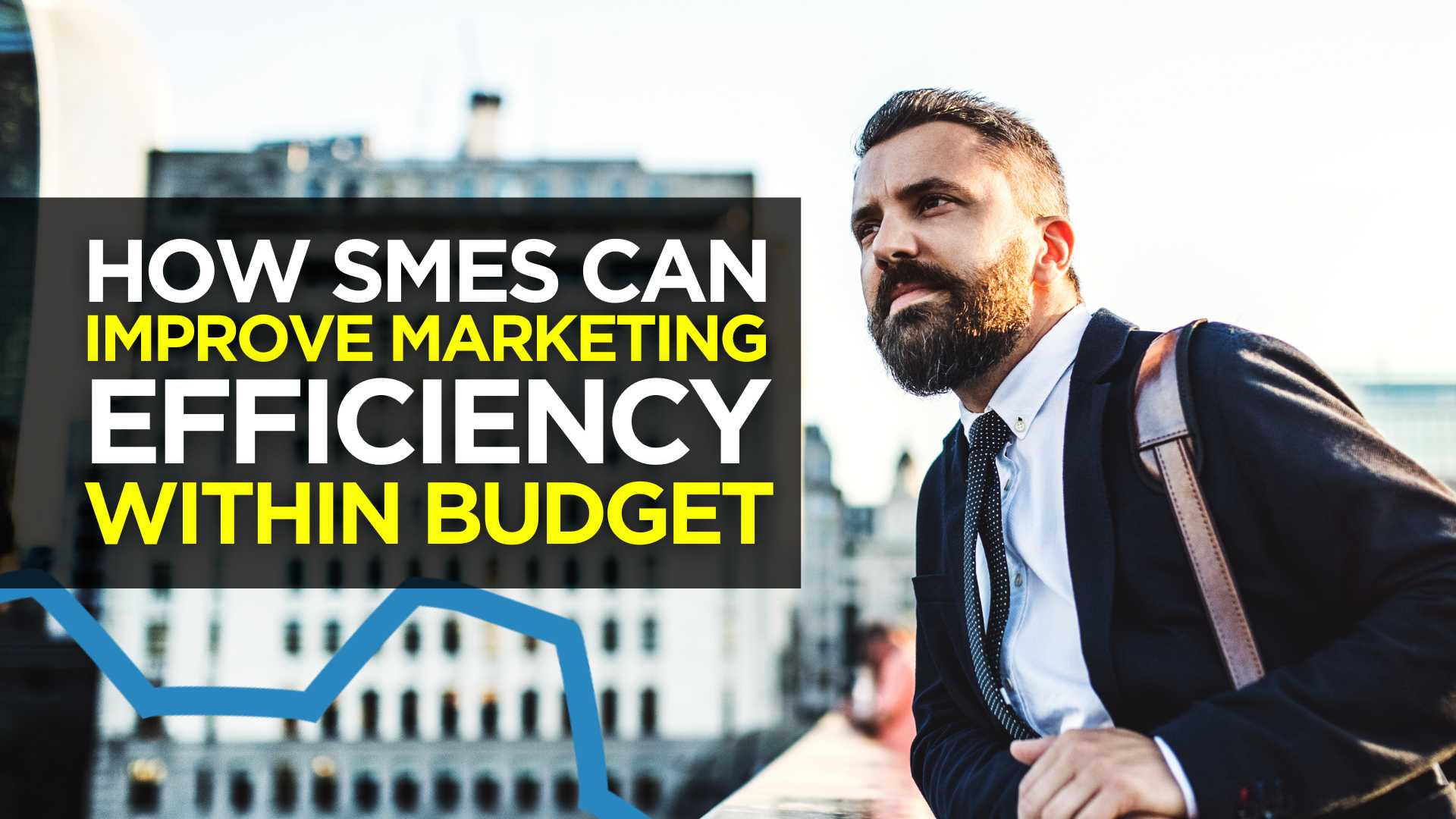How SMEs Can Improve Marketing Efficiency within Budget
- July 22, 2023
- Knowledge Base
- 0 Comments



Marketing is a vital element of any SME’s operation—especially if you’re just starting out.
Marketing is a way to get your name out there, reel in new customers, convert browsers to buyers, and build a core of loyal customers who will sustain your business through thick and thin.
All in all, marketing is worth doing—and it’s worth doing well. But of course, marketing comes with its fair share of challenges, not least the fact that it can be expensive.
Many SME owners are willing to grit their teeth and pay top dollar for great marketing. After all,, marketing campaigns can have fantastic ROI in terms of profit generated. That said, if you’re concerned about cash flow, it’s worth trying to make your marketing as cost-effective as possible.
With the right marketing strategies and the best software to back you up, it’s possible to make your campaigns more efficient without spending too much. You can generate significant campaign results for relatively little outlay through clever, targeted tactics and consistent engagement with your user base.
How? Let’s take a look.
Partner with Influencers & Brand Ambassadors


In terms of marketing efficiency, influencer marketing has a massive advantage over branded posts. Why? Influencers have incredible reach and committed followers who trust their recommendations.
The best influencers are also adept at digital storytelling, enabling them to create compelling, engaging content that resonates with audiences.
That said, it’s essential that you approach the right influencer to be your brand ambassador. Pick someone likely to appeal to your target customers.
To do this, dig into your customer metrics and establish what (and who) your customers will likely find engaging, informative, or simply entertaining. Go through your marketing data, CRM, and customer service records to better understand who your customers are and what they want.
It’s also worth investing in an ERP system, as this can connect all your data repositories, making it significantly easier to collect, collate, and understand your customer’s activity in a meaningful way. You can then use what you’ve learned to pinpoint the perfect influencer for your brand and which products they should focus on.
Encourage Training & Upskilling
Your staff is your best resource—and a more efficient marketing team means more efficient marketing.
Training and upskilling may seem expensive, but it’s worth the investment. A talented, well-trained marketing team can exponentially boost your marketing ROI.
Conducting training shouldn’t be a one-off, either. Marketing is constantly evolving. So marketers need to have their fingers firmly pressed on the pulse of industry trends and events.
Regular retraining and upskilling will keep your marketers up-to-date with current marketing trends. This, in turn, will enable them to work at the cutting edge of their industry.
Focus on SEO
SEO is a highly efficient, cost-effective way to boost your business’s online presence. You can get to the top of Google’s search rankings with relative ease by using an effective SEO strategy.


It’s a simple equation: as Google is often the first place people turn to when looking for a product or service, the more Googlable your business is, the more leads you will bring in.
To boost your SEO, you need to think about the following:
- Producing high-quality content
- Engaging with online audiences
- Having a solid, reputable online presence
- Keeping your social media updated
- Using keywords in your online content
- Staying on top of algorithm changes and SEO trends
Partner with Complementary Businesses
Building a network is a fantastic way to establish your brand without chewing into your marketing budget.
If you can find a business that complements your own, partnering with them for content campaigns and other messages could be a win-win situation.
For example, let’s say you’re in the business of selling cookware. A company that produces or sells cooking ingredients could be a fantastic partner. Together, you could produce recipe blog posts, video tutorials, and culinary tips featuring your cookware and their ingredients, all for relatively little cost.
You can then post this content across your brand’s platforms and theirs, doubling your reach in a single stroke.
Again, businesses you partner with must be relevant to your own. For example, if your cookware company partners with an art supplies store, customers will struggle to see the connection between the two. After all, art enthusiasts aren’t heading to a creative blog for cooking tips, nor will your customers expect to find painting tutorials on your social media channels!
With that in mind, look for businesses with a customer base likely to be interested in your products and vice versa.
Foster User-Generated Content
User-generated content (UGC) can make a big impact.
A good UGC campaign can simultaneously send engagement levels through the roof, boost brand/customer relationships, and vastly increase your reach.
Let’s take a look at a simple, but very successful, example.
In 2022, Shakira released a track with the Black Eyed Peas. Having been out of the mainstream eye for a while and wanting to make a huge comeback, Shakira generated a buzz about this new track by calling on fans old and new.
Her #girllikeme challenge invited TikTokkers to recreate the complex dance from the ‘Girl Like Me’ music video. Unable to resist, TikTok exploded with dance videos. In response, Shakira posted compilations of the best, most inventive, most amusing, and most relatable on her Instagram account.


The upshot was that the track gained a huge boost in plays and popularity. In addition, the hashtag had nearly 500 million views, and Shakira was catapulted back into the mainstream media.
You may not be Shakira, but you can still create a memorable, wide-reaching marketing campaign by encouraging UGC challenges, hashtags, and so on.
Think about how you can challenge customers to get creative with your products and share the results, whether it’s fun ways to reuse packaging or funny photos of pets using your product.
Contests are also a great way of incentivizing users to create content. The price of awarding a prize is worth the ROI of a successful UGC campaign.
Repurpose or Update Old Campaigns
You don’t want to churn out the same old ideas. But at the same time, there is little point in changing a winning formula just for the sake of it.
If an ongoing campaign is working well, keep using it. If a particular message or campaign worked well in the past, freshen it up and reuse it.
Even if you can’t recycle them, old campaigns are a great resource. Historic campaign data can offer useful insights about what does and doesn’t resonate with your customers.
If you want to be thorough, you should compare your campaign data with historical customer and sales data. This will give you a more in-depth analysis and help you to pinpoint why specific campaigns were successful.
To do this, make use of tools like cloud ERP software. This will give you access to the data you need, but also, as it’s a cloud-based solution, it will allow anyone on the team to access data from anywhere.
In this way, the marketing team can easily cross-reference campaign data with metrics like customer satisfaction, conversion rate, and complaints. It’s also beneficial for collaborating with other departments in real-time, so you can access historical data to make better decisions, even if you’re on the go.
But, it is important to be proactive about this. Simply churning out the same old campaigns because they worked once isn’t going to cut it.
Customer tastes change quickly. So, even if you feel that a campaign is still as relevant and engaging as before, it’s still essential that you update it for today’s market.
Utilize Referral Marketing
This is often confused with word-of-mouth marketing and UGC marketing. While there is some overlap between the three, referral marketing is different enough to deserve its own category.
Referral marketing directly incentivizes the customer to bring in new customers. In a typical example, a brand will offer customers a reward—often cashback, a gift card, discount, or free gift—if they persuade a friend to sign up for your service.


It’s worth noting that referral marketing is more common for businesses offering services rather than selling products. These businesses need customers to actively sign up for an ongoing brand/customer relationship rather than simply purchasing a new product whenever needed. However, it can work for product vendors as well.
To make sure customers are properly rewarded for referrals, set up a referral link system. When someone signs up using a customer’s referral link, your ERP software or other system will automatically note the details so everyone gets their referral bonus.
Efficient marketing campaigns don’t have to be expensive. Through careful planning, clear customer insights, an effective ERP system, and clever strategizing, you can run great campaigns with brilliant ROI, for very little initial outlay.
Digital channels offer huge opportunities to leverage your network and engage your customer base in brand-building ways without breaking the bank.
Sure, you get what you pay for in terms of staff, graphics, and so on. But marketing efficiency is more about knowing where and when to deploy that money. It’s about being strategic and insightful, rather than hoping that money will talk.
With the right approach, you can achieve a high degree of marketing efficiency and fantastic ROI—and you don’t have to increase marketing spend to do it.




